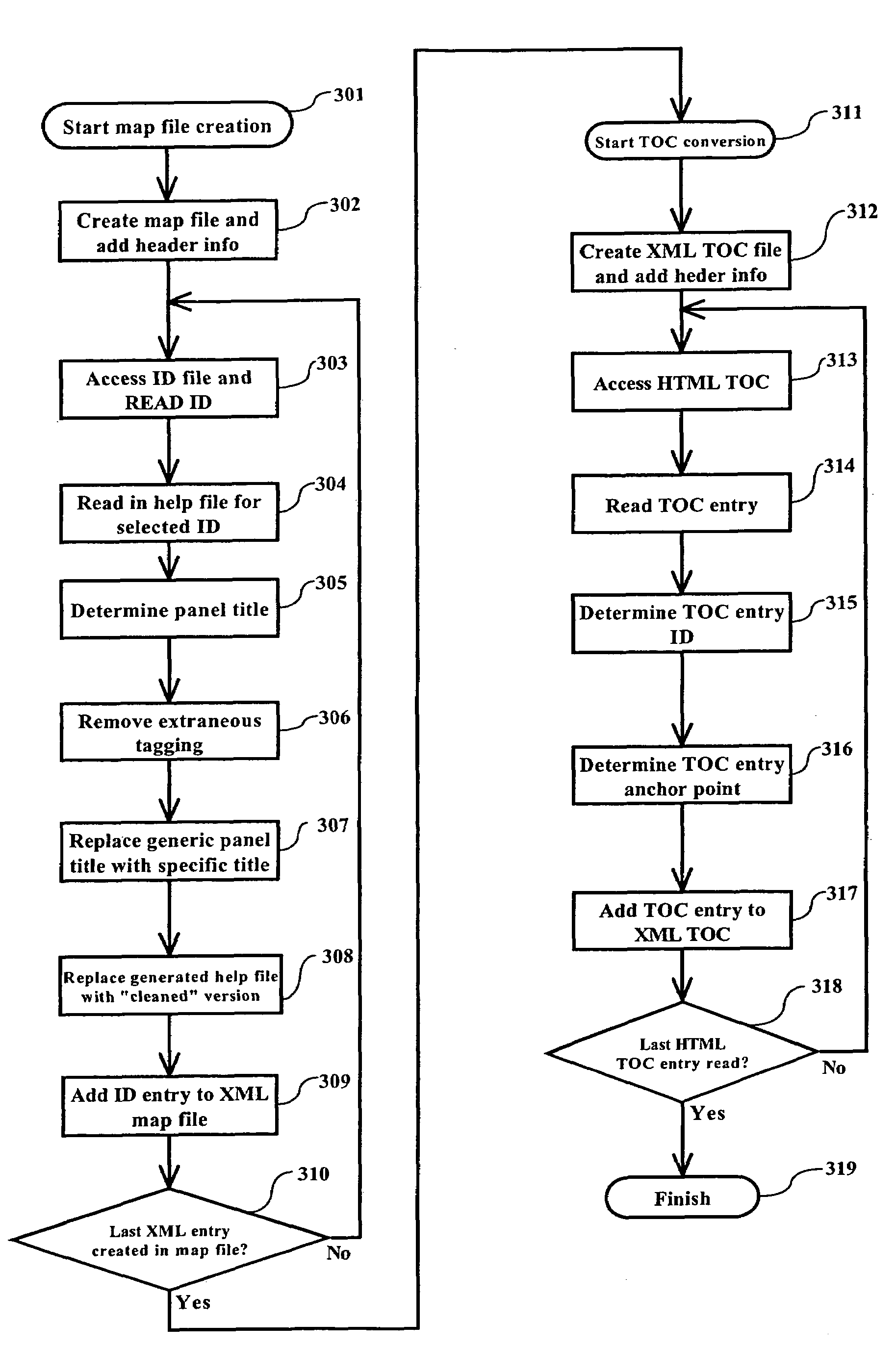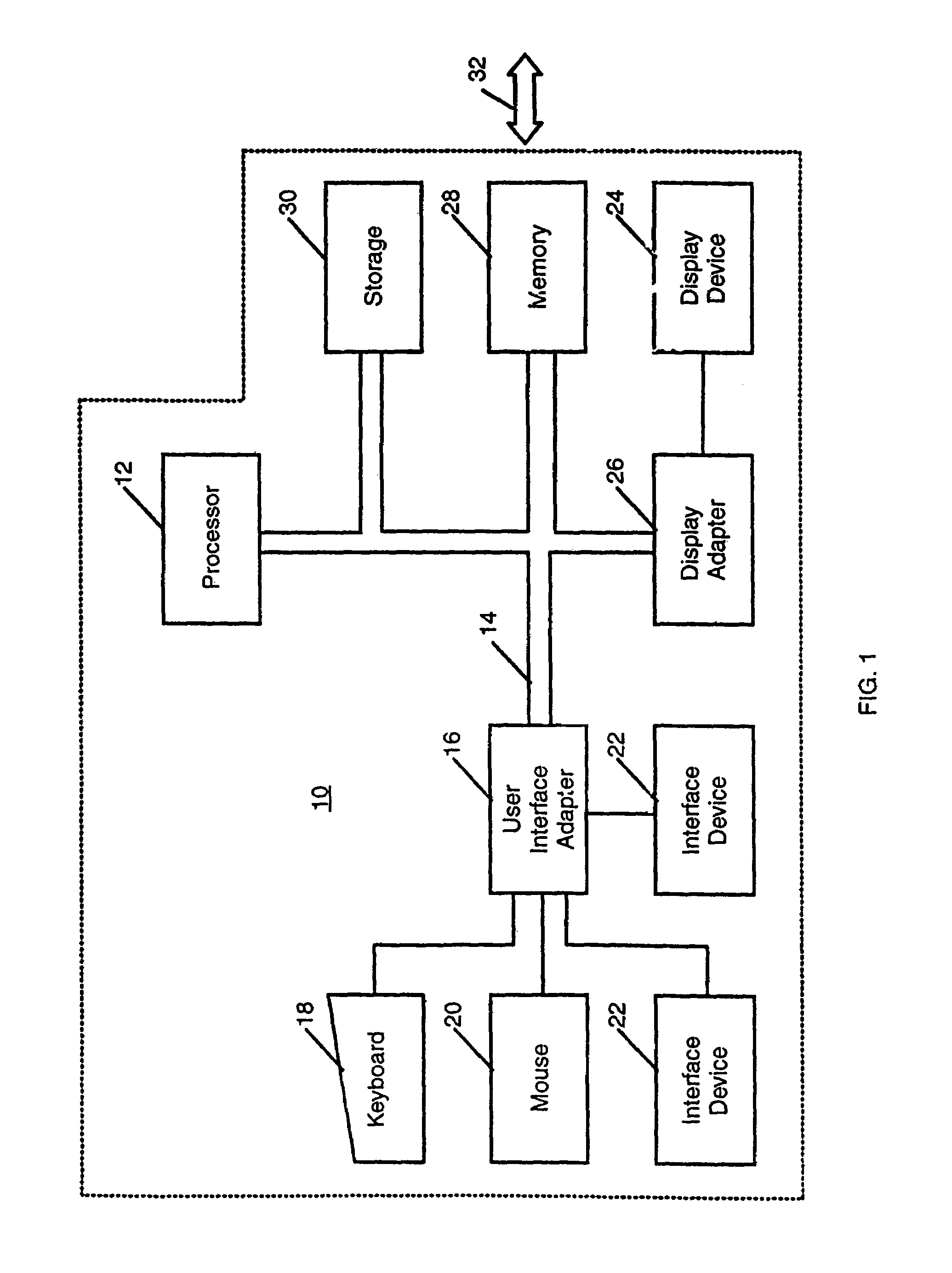Method and system for SGML-to-HTML migration to XML-based system
a technology of sgml-to-html and migration method, applied in the field of file/document conversion, can solve the problems of conflict between xml and html files, inability to immediately access the correct help file,
- Summary
- Abstract
- Description
- Claims
- Application Information
AI Technical Summary
Benefits of technology
Problems solved by technology
Method used
Image
Examples
example
[0050]What follows are examples of the generation of a mapping file named TCCLIENT.JHM and an associated TOC file called TOCFILE.JHM. The steps utilized to create the mapping file TCCLIENT.JHM correspond to steps 301–310 of FIG. 3, and the steps utilized to create the TOC file TOCFILE.JHM correspond to steps 311–319 of FIG. 3; they are not necessarily described in the order of processing illustrated in FIG. 3.
[0051]First, the following headers are placed in the newly created XML mapping file TCCLIENT.JHM:
[0052]
PUBLIC “- / / Sun Microsystems Inc. / / DTD JavaHelp Map Version1.0 / / EN”“http: / / java.sun.com / products / javahelp / map—1—0.dtd”-->
[0053]The headers identify this file as an XML file, so that any file that reads this file will know it is an XML file and thus knows how to process the file properly.
[0054]Next, the following SGML code (a series of READ ID's) is input to the mapping file. This code is a non-XML map file created by the software developer who authored the help files using a “w...
PUM
 Login to View More
Login to View More Abstract
Description
Claims
Application Information
 Login to View More
Login to View More - R&D Engineer
- R&D Manager
- IP Professional
- Industry Leading Data Capabilities
- Powerful AI technology
- Patent DNA Extraction
Browse by: Latest US Patents, China's latest patents, Technical Efficacy Thesaurus, Application Domain, Technology Topic, Popular Technical Reports.
© 2024 PatSnap. All rights reserved.Legal|Privacy policy|Modern Slavery Act Transparency Statement|Sitemap|About US| Contact US: help@patsnap.com










